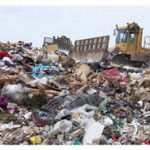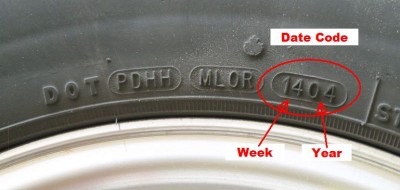As RV enthusiasts, we all appreciate fresh, chilled food and cool beverages from the refrigerator. We also enjoy the cool comforts of air conditioning, especially while traveling through hot, dry climates. But what exactly are these appliances really doing? What exactly is refrigeration? Refrigeration or “cold” is simply the absence of heat. But how does that heat get transferred within RV air conditioning and refrigeration systems?
Laws of Thermodynamics
Heat transfer is governed by the laws of thermodynamics. The first law of thermodynamics tells us that energy cannot be created or destroyed while the second law of thermodynamics tells us that heat flows from hot places to cold places; it never flows from cold places to hot places. RV refrigeration, therefore, can be defined as a means of moving heat from one location to another by using some type of equipment. The refrigeration system must convert heat energy to another form and move that heat according to the second law of thermodynamics.
Mechanical vs. Absorption Technology With RV air conditioners, mechanical means of refrigeration are used to cool the air inside the RV and to control the humidity. In the RV absorption refrigerator, heat is transferred from inside the freezer and fridge to the RV exterior, silently and with no moving parts.
Air Conditioning
The major components of a mechanical air conditioner include the blower fan, evaporator, a metering device (most commonly, a capillary tube), condenser and the refrigerant. Warm air is drawn into the air conditioner by the blower from the living areas through the return air grill. This filtered air passes over the evaporator coils. The cold refrigerant inside the sealed system extracts heat and moisture from this moving air. The warm air changes the state of the refrigerant from a liquid to a low pressure gas.
The cooler air is then returned to the living area through the ceiling vent or ducts. The low pressure gas passes through to the compressor where it is compressed into a hot, high pressure gas. This gas enters the condenser where cooler outside air is pulled in through louvers in the shroud of the air conditioner over the coils. The cooler air transforms the hot gas into a liquid that is metered into the evaporator and the result is a cooler climate inside the RV. The refrigeration cycle continues as long as the blower and compressor are running. This sealed system combined with integral airflow dynamics and electrical devices form the basic RV air conditioner.
TLC for Your AC
The key to long life for your RV air conditioner is simply to keep the filter in place any time the unit is running and to keep it clean. Inspect the condenser coils from time to time and be sure no dirt or debris gathers in the fins. Use a fin comb to straighten bent fins.
Absorption Refrigeration
It’s been more than 80 years now since Dometic invented the first refrigerator in its Motala, Sweden production complex, where production continues today. It was an absorption model that used the same basic technology that you will find in today’s RV refrigerators. Before that time, iceboxes were used to chill and preserve food. The refrigerator is considered one of the last century’s ten most significant inventions, revolutionizing food preservation to improve overall health and quality of life. Dometic continues to be the innovator in absorption refrigerators: it was the first to produce environmentally-friendly CFC/HFC-free RV refrigerators in the 1990s, helping preserve the Earth’s protective ozone layer.
While the typical home refrigerator is more like an air conditioner, with a mechanical compressor, the RV absorption refrigerator remains an enigma to most RV owners.
Using heat to make cold sounds mysterious. But by grasping the basic theory of absorption and understanding the importance of leveling, ventilation and cleanliness, the RV refrigerator can provide many years of enjoyment. Let’s take a look at the absorption refrigerator by first examining the heart of the refrigerator, the cooling unit.
A typical RV refrigerator cooling unit consists of four major components: the boiler, condenser, evaporators and absorber. The unit is sealed and pressurized and is non-field-repairable. (The refrigeration system of the air conditioner is also sealed, but repairs are possible in the service shop). The internal contents of the sealed absorption system include water, liquefied ammonia, hydrogen gas and sodium chromate, the chemical used to line the internal pipes to protect them from the corrosiveness of the ammonia.
During a typical cycle, heat is applied to the boiler by either an electric heating element or an open propane flame. Water and liquid ammonia begin to boil and ammonia vapor is passed on to the condenser. The water is separated and returns to the boiler section. After condensing back into a liquid, hydrogen vapor is introduced to the liquid ammonia at the low temperature evaporator located in the freezer compartment. Heat from inside the freezer is transferred through the pipes of the low temperature evaporator and released to the exterior. Since the absence of heat is cold, the freezer and everything in it becomes cold.
Next, a remnant of mixed hydrogen vapor and liquid ammonia passes to the high temperature evaporator in the refrigerator compartment, and the process of removing the heat continues, albeit less assertively. The food storage compartment/high temperature evaporator becomes cold, but not as cold as the low temperature evaporator in the freezer.
Upon leaving the evaporator sections, the weakened ammonia liquid then flows into the absorber coils. Here the hydrogen vapor rises back up to the evaporator section while the ammonia is mixed with water in the absorber vessel, flows to the boiler and the process starts all over again.
Why Leveling Matters
From the point where liquid ammonia leaves the condenser until it reaches the absorber and re-mixes with the water, gravity provides the impetus. Off-level operation slows the pace and causes overheating in the boiler section. Continued operation in an over-heated condition results in cooling unit blockage when the sodium chromate particles turn to crystal and block sections of internal piping in the boiler–a process that cannot be reversed. The only remedy for a blocked cooling unit is replacement. Take the time to properly level the RV; make sure the rear of the unit is ventilated and keep the working components clean. Your refrigerator (and your wallet) will thank you.
Fridge TLC
The incorporation of printed circuitry, electronically-controlled gas valves, 120-volts AC, 12-volts DC and propane fuel in one appliance can be somewhat puzzling. Therefore, performing your own RV refrigerator cleaning and service will require more than just a mechanical inclination; you also need to understand the operation of your particular unit as well as of the theory of absorption refrigeration. And, the do-it-yourselfer must always make safety the number one priority, so always be sure that the propane has been completely shut off and that all electricity has been disconnected before performing maintenance on any propane-burning appliance.
Refrigerator Checklist
Here are a few items that need annual attention on any absorption refrigerator:
■ Burner assembly and orifice. Must be accessed, disassembled, cleaned and reassembled.
■ Flue and flue baffle. If yours is accessible, remove it and clean away the carbon deposits. A specifically designed flue brush may be necessary.
■ Ignitor assembly. Likewise, the spark probe, ground probe and flame sensor must be free from carbon deposits.
■ Cooling unit. The cooling unit is accessible through the exterior refrigerator side vent. Vacuum and clean all exposed components and tubing. Inspect and clean the condenser fins at the very top of the cooling unit. Remove any blockages.
■ Refrigerator receptacle. Check for proper polarity and voltage at the refrigerator receptacle located at the rear of the refrigerator.
■ Printed circuit board contacts. Clean and preserve the contact strip on the printed circuit board and all other electrical terminals.
■ Main regulator. Be sure it is adjusted to 11.0 inches of water column and that the RV is propane leak-free.
■ Storage/non-use. After the camping season ends, be sure to thoroughly clean the inside of the refrigerator completely. Remove all food and wash down all plastic components. Do not use an abrasive cleanser. Block the refrigerator doors open to allow free flow air to circulate inside.
Refrigeration Matriculation Congratulations! You have now completed RV Refrigeration 101, gaining insight into how your RV cooling appliances work their magic, plus the importance of preventive maintenance.





